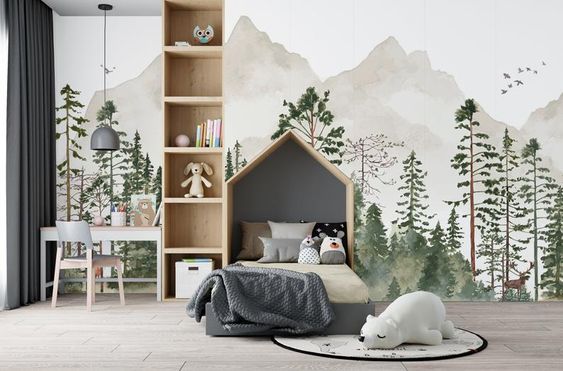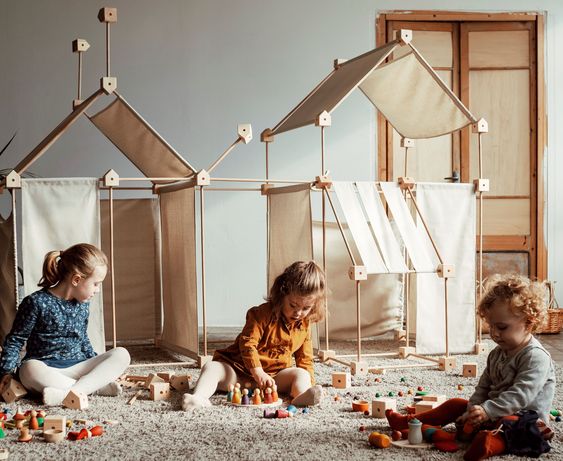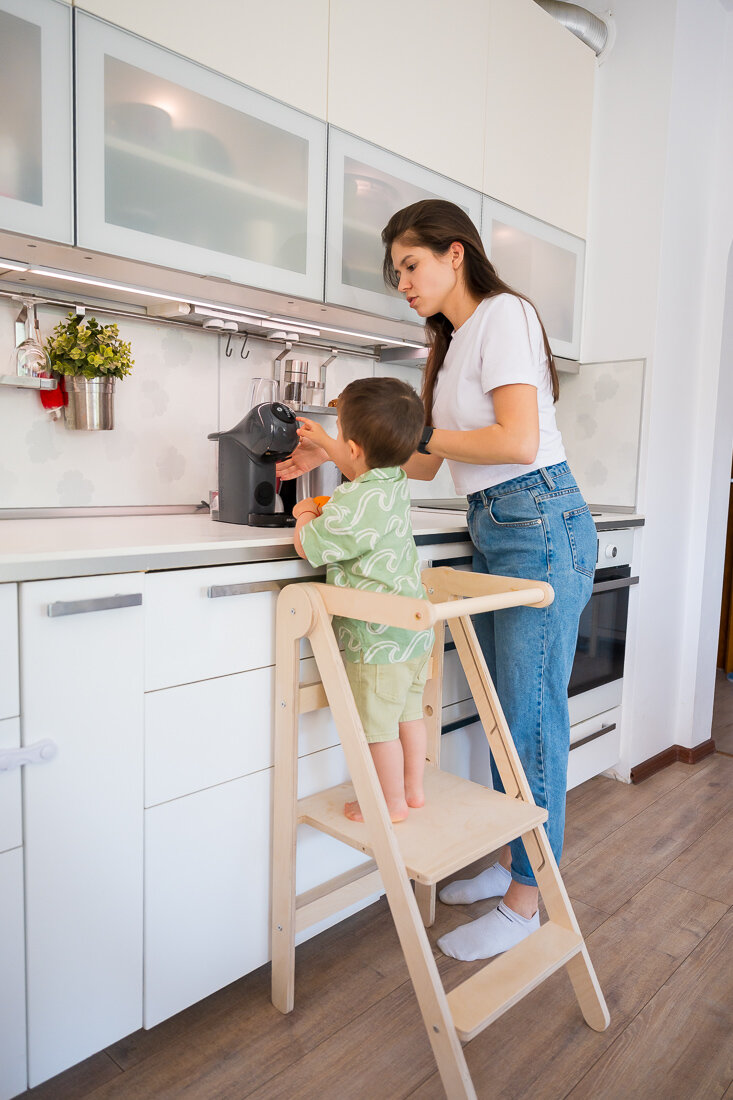Designing your child’s room following the Montessori method brings warmth, calmness, and balance — but most importantly, it creates the perfect environment for learning and growth.
If you dream of turning your little one’s space into a cosy Montessori sanctuary, here are seven useful ideas to help you do it.
Create a Calm and Beautiful Environment
According to Dr Maria Montessori, too many decorations, posters, or toys can easily overwhelm a child’s senses and make it harder for them to focus.
One of the core goals of Montessori education is concentration. That’s why a child’s room should encourage calm and focus rather than overstimulation.

A few framed pictures, a soft rug, and natural wooden shelves are often all you need to create the perfect base for a Montessori kids’ room.
Embrace Minimalism
A common mistake parents make is filling the room with countless toys that children quickly lose interest in.
In fact, kids play more creatively and with greater focus when they have fewer toys available.
If your child already has too many, try rotating them — offer just a few at a time and swap them every couple of weeks.
This keeps playtime fresh and exciting, while also making it easier to keep the room tidy and organised.
Choose Toys Carefully
In Montessori homes, toys aren’t just for entertainment — they’re essential learning tools that help children develop their senses and motor skills.
Always go for high-quality, natural materials such as wood. Wooden toys, building sets, and role-play activities are excellent Montessori choices that nurture creativity and focus.

For physical development, opt for play equipment that encourages movement. A foldable Pikler triangle is a wonderful Montessori climbing frame that promotes strength, balance, and coordination — all within the comfort of your home.

Add Child-Sized Furniture
Dr Montessori believed that children should be able to move and interact freely with their environment.
Mini furniture pieces are a must in every Montessori room — they give children independence and comfort.

Just as adults enjoy their personal workspace, little ones feel proud when they can sit at their own table, draw, or play creatively in their own space.
Encourage Tidiness and Independence
Tidying up is an important skill that helps children feel responsible and confident.
Maria Montessori observed that children take pride in maintaining order around them.
To support this habit, provide simple, accessible tools — for instance, a wooden cleaning set or small baskets for sorting toys.
This teaches them that cleaning isn’t a chore, but a natural and rewarding part of everyday life.
Bring Nature Indoors
Adding a living plant or a small aquarium in your child’s room teaches responsibility and empathy.
Children love caring for plants and animals when they understand how — simply show them and lead by example.
A flower pot or vase with fresh blooms not only looks beautiful but also invites your child to water it daily, fostering lifelong habits of care and patience.
Create a Cosy Reading Corner
Encourage reading by setting up a small, inviting space with soft cushions, a child-sized chair, or even a wooden climbing rocker with a cushion.

A well-organized reading nook quickly becomes a favorite spot and helps develop your child’s love for books and quiet time.
Make Every Corner Accessible
Children appreciate independence. Using a Montessori learning tower helps them safely reach shelves, books, or toys without adult help.

It’s a simple way to empower them to explore and make their own choices — a key principle of the Montessori philosophy.
By following these Montessori room ideas, you’ll create a peaceful, inspiring, and functional environment where your child can grow, learn, and thrive — naturally.








